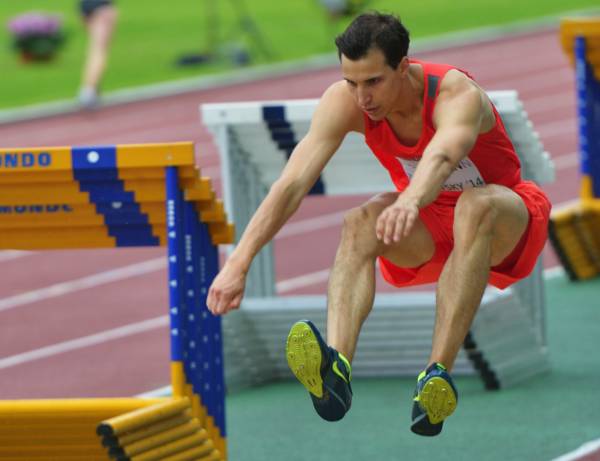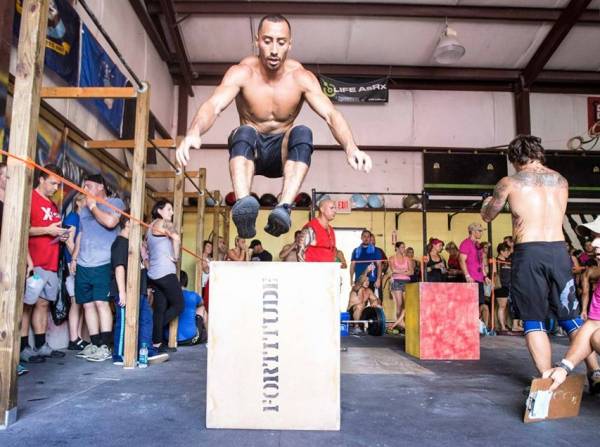What are plyometrics? Plyometrics in simple terms means jump training. Plyometrics enhance our explosiveness, power, and body control. They teach us how to stretch our muscles before we contract them as we land after a jump.
These types of jumping movements require the various muscle groups to work together all at once, which involves learning how to use the whole body as one unit quickly and aggressively.
Let’s take a look at how the elite athletes use plyometrics in their training, so we can all learn the benefits and how to incorporate them into our own training for greater success and better performance.
Examples of Plyometric Exercises
Some effective plyometric exercises used by professional athletes are cone jumps, hurdle jumps, and single-leg take-offs. In addition, rebounding jumps, depth jumps, and ski jumps are great ways to practice control in our landings and be able to load immediately for another direct take-off. Box jumps, broad jumps, and vertical jumps are the most commonly used plyometrics and are an easy way to test and retest progress.
“Plyometrics will enhance our explosiveness, power, and body control. They teach us how to stretch our muscles before we contract them as we land after a jump.”
Other types of jumps used are bounding jumps, tuck jumps, split jumps, and hurdling. An appropriate amount of plyo jumps to garner positive results would be for the athlete to complete eight to 100 jumps per session.
Along with the jumps, speed exercises are often incorporated. For instance, the speed ladder, dot pads, and shuttle slides are an essential part of a professional athlete’s daily training.
How the Pros Use Plyos
Plyometrics are often used with professional athletes. For instance, basketball, soccer, and football players all need the capability to hurdle over someone, reach for a ball, or jump on command. These types of elite athletes are asked to have great body control in unpredictable circumstances. They need to be able to jump in the air, to catch a ball, and to land on their feet under control. At times this catch needs to be completed in combination with contact from an opponent. The best way for these athletes to be prepared for these situations is to add plyometric jumps to their training sessions.
For professional athletes, the off-season is a time when plyos are used after a strength session. Let’s say five reps are completed of a semi-heavy quarter back squat with a slow, controlled descent followed by an aggressive ascent where the finishing position is on the toes as if a jump was about to take place. After the completion of these five reps, the weighted barbell is immediately racked and followed by five explosive quarter-squat jumps. The athlete has now transferred that same speed generated under the barbell to the bodyweight squat jumps. This will then translate well into the athlete’s sport.

Plyometrics is a great addition for in-season training, as well. It’s a perfect way to either start or end a sport-training session. Starting a sport-specific practice with some single-leg jumps and landing with control can be a good reminder for the muscles to react properly during the duration of the training.
If an athlete is involved in an all year sport, then plyometrics can be added whenever the athlete feels it fits into his schedule. As stated earlier it can be done before or after a training session. That said, planning a whole session of plyometrics on its own might periodically be necessary. But keep in mind it’s important to make sure our central nervous system is fresh when attempting some of the higher-level jumps or when completing a high number of reps.
Why Do We Need Plyometrics?
Plyometrics help us become all-around athletes. It helps us become more balanced and symmetrical, which is essential in every sport and in our day-to-day routine.
“This movement strengthens our glutes and allows them to be fully loaded from a take-off position to a squeeze at the top of extension, and then to be strong enough to catch the momentum when landing.”
Plyometrics improve our sprinting, as well, especially when doing single-leg training. With single-leg training, we are finding out how to be forceful in the same way that is needed when we are running. One-legged horizontal jumps are a great drill that best simulates sprinting and will help with running performance.
Moreover, plyometrics make us use our hips to their highest capability as we learn to go quickly from a quarter squat to a full extension with power. This movement strengthens our glutes and allows them to be fully loaded from a take-off position to a squeeze at the top of extension, and then to be strong enough to catch the momentum when landing.
Technique Tips for Plyometric Training
- Use your feet as rockers. During the eccentric or loading phase, weight should be on the heels with active glutes.
- The knees should be forced away from each other, as we want to avoid side-to-side motion during the take-off and landing.
- Thee transition phase will take place where the weight is transferred to our toes and we fully extend our hips and squeeze our glutes.
- The concentric phase is where we catch the momentum created from the jump on our heels, while landing with soft knees.

Don’t Cut Plyometrics Short
An athlete’s goal is to become as athletic as possible and to perform at a high level. He needs to cover every area of training and to be proficient in each area. Elite athletes should be strong, powerful, and forceful while simultaneously being graceful.
Strength and finesse can go hand in hand – the one benefits from the other. Don’t cut plyometric training short. When it’s incorporated into your training regimen, you will soon possess the agility, speed, and grace of a gazelle.
More Like This:
- Plyometrics: Terms, Definitions, and Proper Planning
- Plyometrics: How Much Is Enough?
- Proper Preparation for Plyometrics
- New on Breaking Muscle Today
Photo 1 and 3 courtesy of Jorge Huerta Photography.
Photo 2 courtesy of Shutterstock.






